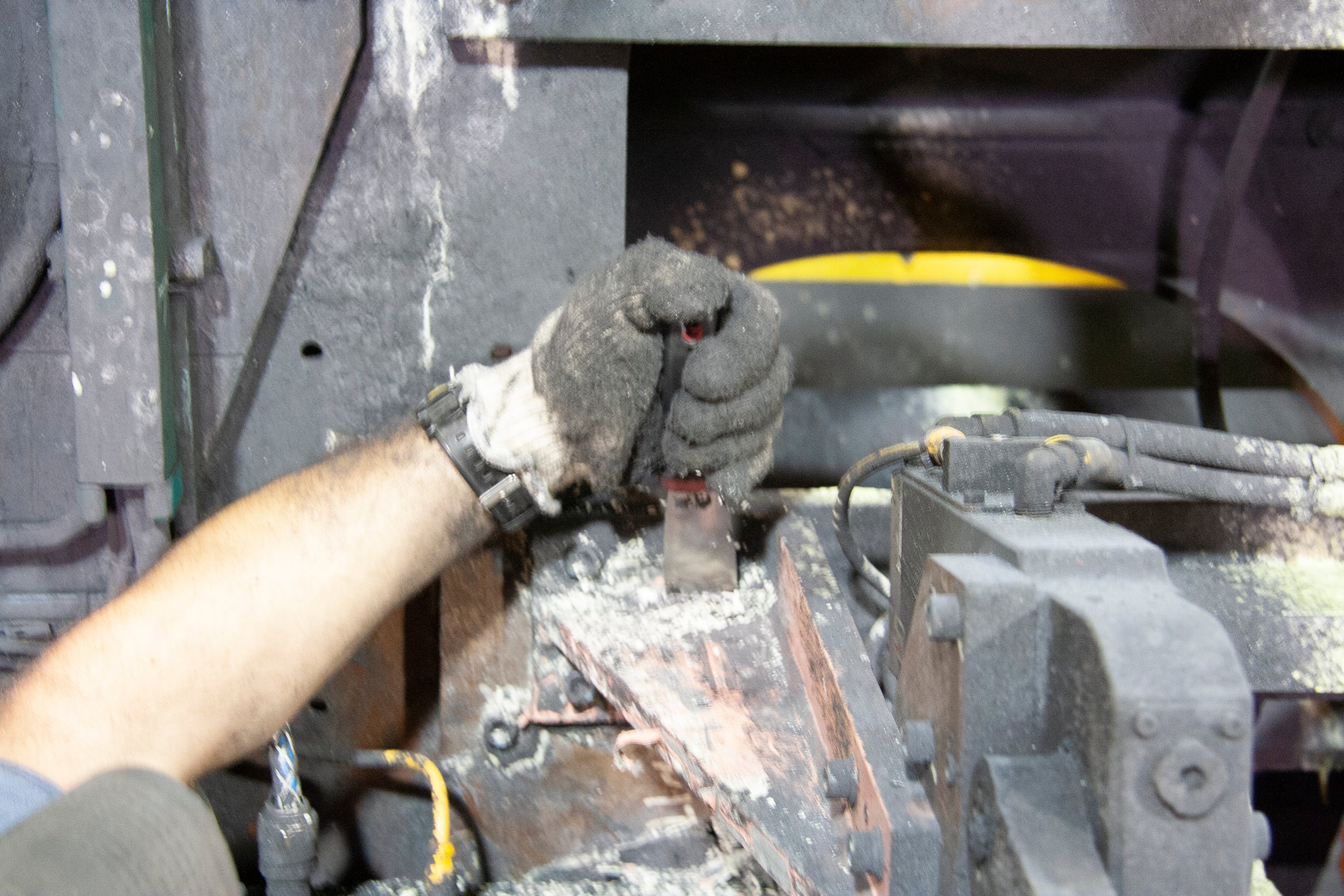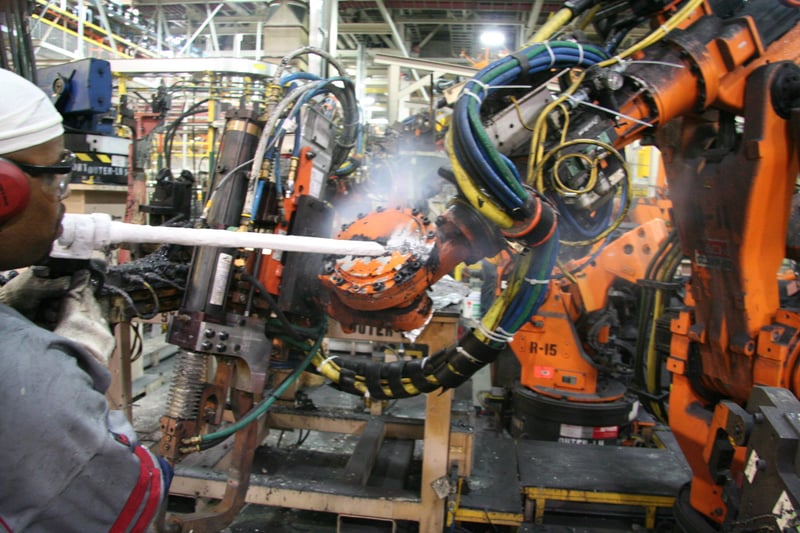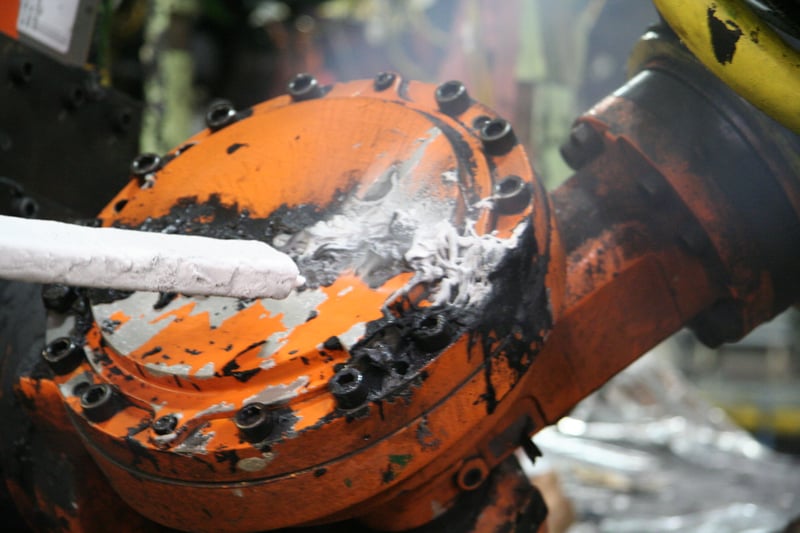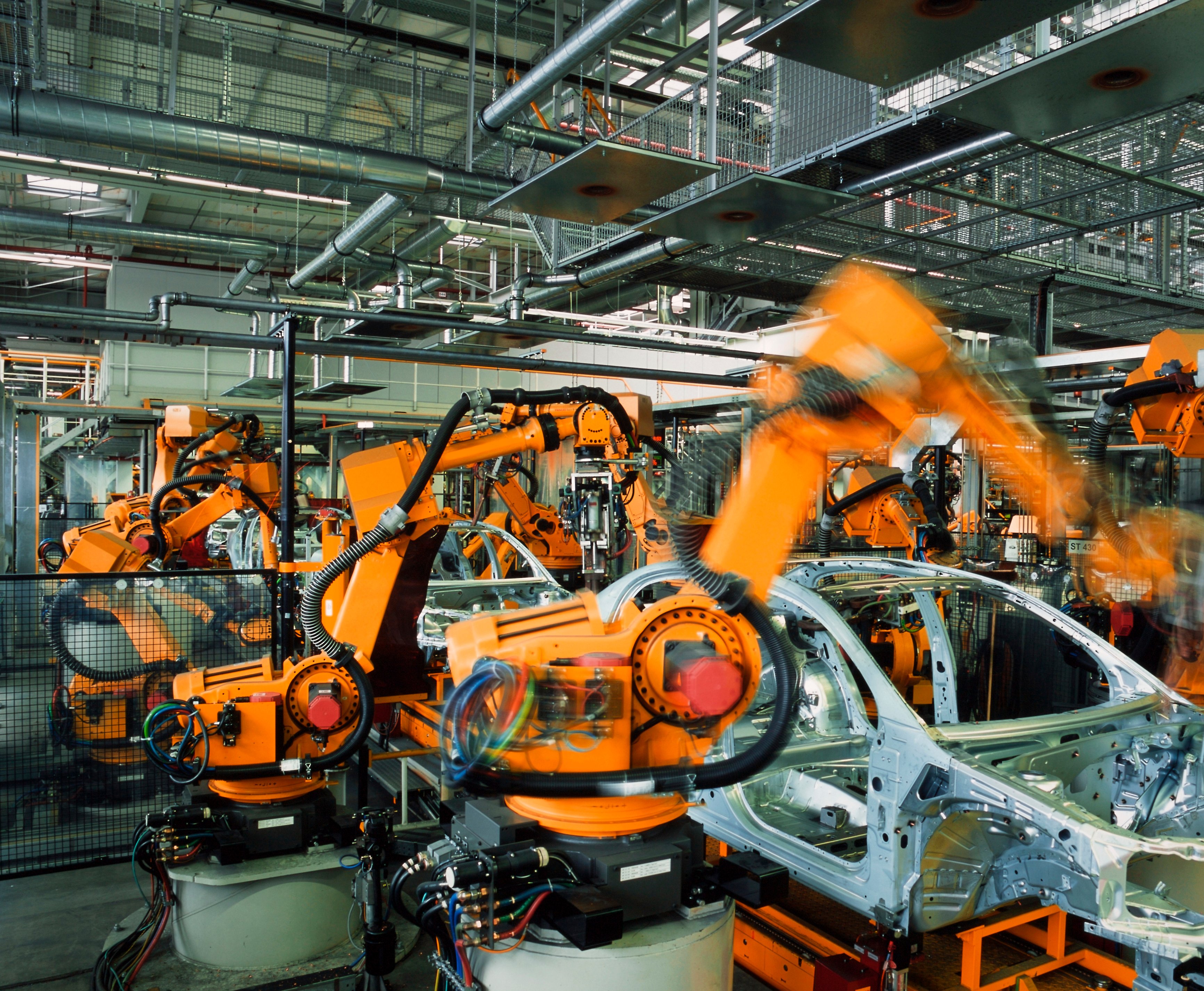Welding is a dirty process.
On automated weld lines, slag, spatter, resin, smoke, oil and dampering adhesive build up on surrounding production equipment.
This causes misalignment and can prevent the proximity switch from firing in the appropriate spot. The robot will then stop welding – or it will weld incorrectly – creating scrap and causing equipment failure and production downtime.
Traditional cleaning methods to remove weld spatter and slag from welding jigs, cells and robots – such as using a hammer and chisel – can damage the weld line equipment and ultimately lead to increased downtime.
Maclellan Integrated Services is often contacted by automotive facilities and other manufacturing plants to clean and maintain automated weld lines. Maclellan had previously used traditional methods to perform the cleaning, but began to investigate dry ice blasting as a more effective option.

The Solution: Dry ice blasting
Dry ice blasting systems provide an effective, economical and delicate removal solution for slag and spatter build up. Dry ice cleaning systems use non-abrasive media in the form of recycled CO2 pellets that won’t damage surfaces. The combination of dry ice cleaning’s kinetic energy and thermal effects break the connection between the dirt and surface, lifting away contaminants.
Learn about dry ice blasting for weld lines >>

Unlike blasting with other media, dry ice blasting:
-
Does not leave behind any secondary waste, because the dry ice particles sublimate on impact – converting from a solid to a gas.
-
Is safe and non-toxic
-
Does not create downstream contamination
-
Reduces exposure to dangerous chemical cleaning agents
“We are able to do 2-3 times the number of jobs with dry ice cleaning and the outcome is better,” said Steve Foster with Maclellan Integrated Services. “We can also meet the kaizen ‘shared cost reduction’ now using dry ice blasting and still make good margins on the job. Lastly, we keep finding more applications for dry ice blasting, ultimately creating additional business for us with the same customer.”

The Results
After implementing dry ice blasting in their cleaning process, Maclellan experienced a number of benefits and improvements compared to manually hammering and chiseling.
1) Reduced required labor from 4 workers to 1
By eliminating the need for manual cleaning, one worker is able to complete the same cleaning project that was previously performed by four people.
2) Reduced labor time by up to 69%
Overall cleaning time was reduced by 69% due to the fact that dry ice blasting cleaned their equipment much faster than manually cleaning.
3) Reduced cleaning costs by up to 60%
By cleaning quicker, using less labor and eliminating the costs of chemical cleaning solutions, the overall cleaning costs were significantly reduced.
4) Drastically reduced equipment damage
Dry ice blasting is non-abrasive and will not damage the surface of the equipment and tooling. However, sensitive components, such as photoeyes and proximity sensors, should not be deliberately or directly blasted.
5) Dramatically decreased labor intensity
It is safer for the employee and eliminates the repetitive and tedious task of manually hammering and chiseling, which improves overall worker morale as well.
6) Eliminated the use of chemical solvents
With dry ice blasting, chemical cleaners are not required, thus improving worker safety by eliminating contact with caustic chemicals.
7) Eliminated secondary waste streams
Dry ice sublimates back to gas when it hits the surface of the area being cleaned, which results in no waste or residue.
ROI / Cost Justification
-
Savings of $2,956 per station per week.
-
Labor hours reduced from 7.2 to 0.5 per robot.
-
$153,712 in annual savings over the traditional method of cleaning (for 38 robot cleanings per week).
-
ROI is 344 robot cleanings or 2.3 months.
.png) English
English
